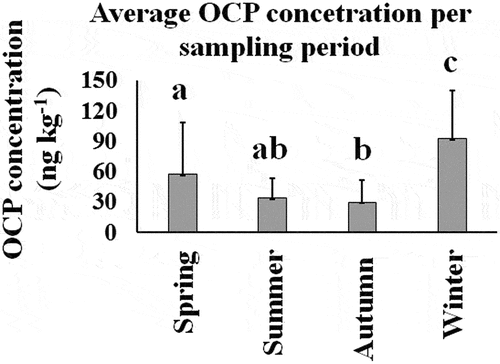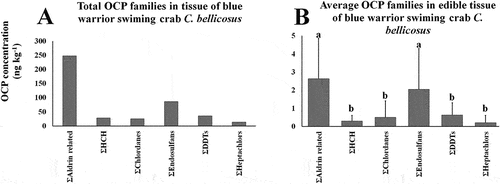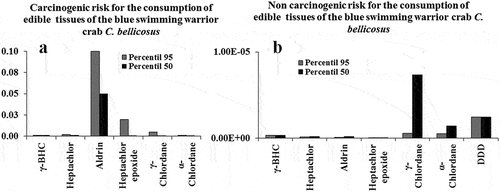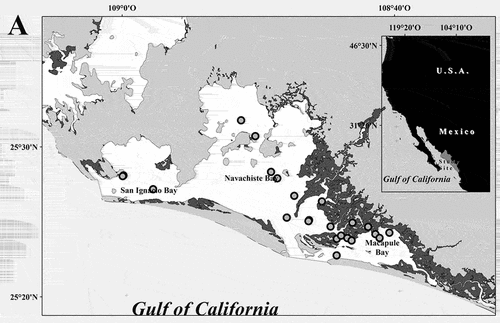Figures & data
Table 1. Limits of detection, average recovery, and average recovery of fortification samples and coefficient of variation
Figure 2. Total (A) and average (B) detected OCP concentrations (mg kg−1) in C. bellicosus from NAV.

Figure 3. Average total OCP concentration detected in the edible tissue of C. bellicosus from NAV. Different letters mean significant differences among periods (p < 0.05).

Figure 4. Total OCP isomer families (A) and average OCP (B) detected concentrations in C. bellicosus from NAV. Different letters mean significant differences (p < 0.05).

Table 2. Average OCP estimated exposure (mg kg−1 day−1) to the population for consumption of seafood in the world
Figure 5. Estimated average OCP exposure (50 and 95 percentile). (a) OCP carcinogenic; (b) non–carcinogenic; (c) risk for the consumption of edible tissues of C. bellicosus from NAV.

Table 3. Ranges of parent/metabolite (or degradation products) ratios indicative of recent use (>1) and legacy use (<1) of OCPs
Table 4. Correlation (r2) among water physicochemical parameters and mean OCP concentrations (mg kg−1 d−1) detected in edible tissues of C. bellicosus, from the NAV, Mexico
Data availability statement
The data that support the findings of this study are available from the corresponding author, [HAGO], upon reasonable request.
